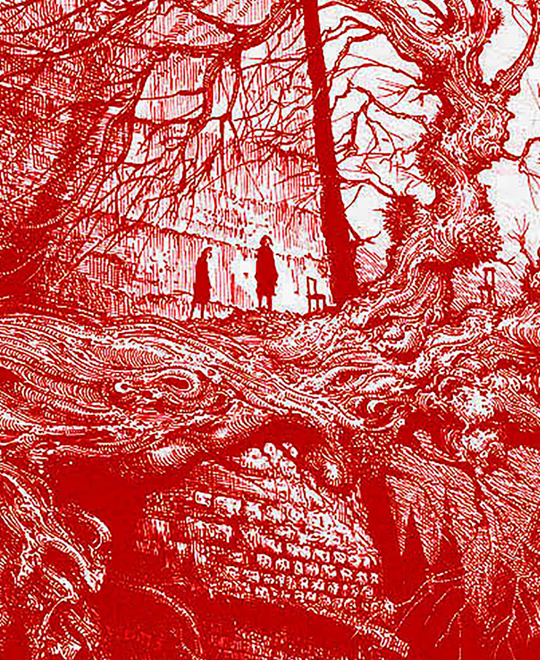Studio 21
Sensing Place
Julian Rutten & Mark Taylor

Studio Description
While both space and time are readily subject to quantitative analysis, place seems irreducibly qualitative. Yet place is a key element in design, and especially architectural design. This studio is part one of a trio of design studios contributing to an ARC Discovery project titled Place and Parametricism with chief investigators Mark Burry, Gini Lee, Jeff Malpas, Stanislav Roudavski and Mark Taylor.
Recognising that we are entering an age when big data, parametric design, and real-time interaction are beginning to inform design decision making. The challenge for this studio is incorporating qualitative elements (narrative, emotional, and sensory) into digital processes. For designers, one question that arises is how might physical data relate to the complex character of place.
This relationship between qualitative and quantitative is examined in three preliminary design projects. Firstly, engaging with imagined places within literature with physical and emotional descriptions of Gormenghast Castle from Mervyn Peake’s fantasy novel, Gormenghast. Then dealing with physical places, the students will design and build a cyborg terrarium where finally, they will use sensor data from within these mini-worlds to generate virtual places. The major design project will be within the Burnley campus, and includes both buildings and landscape. This phase will produce form by collecting and analysing on-site information using distributed sensors and custom phone applications. The variable data will be visualised to inform a speculative and experimental design proposal.
Studio Outcomes
The aim of the studio is to examine place through both emotional and physical data, and to test how this data might be used in the creation of a new place. Its objective is to test the relationship between the qualitative and quantitative aspects of place through parametric modelling. The studio is structured through a process of researching, analysing and data mapping both individually (analysis and ideation) and in groups (design prototype and fabrication). Studio will meet twice a week with the studio leaders, be supported by other ‘gurus’ from the research team and external international critics will provide input during and at the end of the process.
Studio Leaders
Julian Rutten has an undergraduate in Landscape Architecture and Masters in Mechanical Engineering. Since his studies he contributed to research at RMIT’s and Melbourne University’s robotics department. At RMIT he designed a control system for live control of their mechanical arms. At Melbourne University, along with contributing to the setup of their robotics department, he taught architectural student’s grasshopper and unity, a game development software, and c# coding that produced a GPS based game to promote interaction with natural environments, Merri Creek, in unexpected ways.
Dr Mark Taylor is Professor of Architecture at Swinburne University. His design work has been exhibited at "Royal Academy Summer Exhibition" (London), “Homo Faber: Modelling Ideas” (Melbourne Museum 2007), and "Abundant” (Venice Architecture Biennale 2008). (p) Mark convened (with Gini Lee) the international symposiums 'Interior Spaces in Other Places' (2010) and 'Flow: A Conference in Two Parts' (London 2011 and Melbourne 2012) with Penny Sparke, Pat Brown and Gini Lee. He is widely published in many journals including Architectural Design and Interiors: Design Architecture Culture, and recently co-edited ‘Flow: Interior, Landscape and Architecture in the Era of Liquid Modernity’ (Bloomsbury 2018).
Reading & Reference
Literature:
- Peake, Mervyn, (1950). Gormenghast. London, UK. Eyre & Spottiswoode.
- Taylor, Mark, (2013) ‘Literary Narratives’, in Graeme Brooker and Lois Weinthal eds, The Handbook of Interior Architecture and Design, London and New York: Bloomsbury Academic, pp 481-494.
- Spurr, D., (2012). Architecture and Modern Literature. Anne Arbour: University of Michigan
Design:
- Willis, A.-M. (2006). ‘Ontological Designing.’ Design Philosophy Papers 4(2): 69–92.
- Dunne, Anthony, and Fiona Raby (2013). Speculative Everything: Design, Fiction, and Social Dreaming (Cambridge, MA: MIT Press),
- Burry, M. and J. Burry (2016). Prototyping for Architects. London, UK, Thames & Hudson.
Place:
- Malpas, J. (1999). Place and Experience: A Philosophical Topography. New York, US, Cambridge.
- Malpas, J. (2015). ‘Place and Singularity.’ The Intelligence of Place: Topographies and Poetics: 65–92.
- Thrift, N. (2010). Halos: Making More Room in the World for New Political Orders.
Political Matter.
- B. Braun and S. J. Whatmore. Minneapolis, US, University of Minnesota Press: 139–174.
Technology:
- Arthur, P. L. (2017). ‘Things Fall Apart: Identity in the Digital World.’ Life Writing 14(4): 541–550.
- Halpern, O. (2015). Beautiful Data: A History of Vision and Reason Since 1945. Durham, US, Duke University Press.
Digital Design Exercises:
- Johnson, J. S. and J. Vermillion, Eds. (2016). Digital Design Exercises for Architecture Students. New York, US, Taylor & Francis.
- https://vimeo.com/exlab https://unity3d.com/learn/tutorials
ST1/21 Tuesdays 18:15-21:15 in MSD Room 138
ST2/21 Thursdays 18:15-21:15 in MSD Room 138